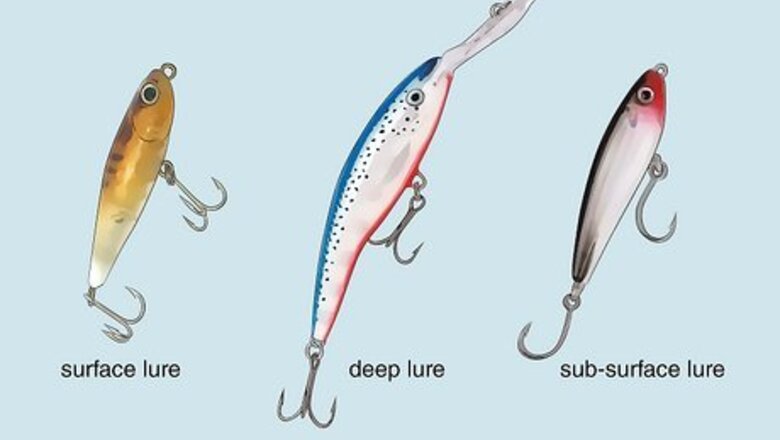
views
Picking a Lure
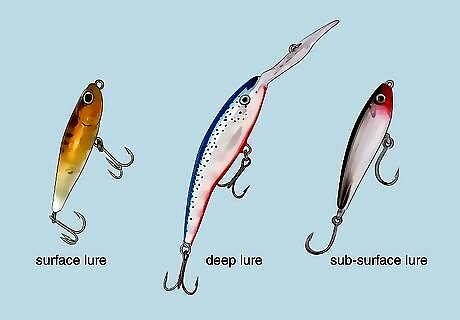
Know the differences between the depths of lures. There are three categories of lures based on the depths they're used for: surface, sub-surface, and deep. What type of lure you should use will depend partially on the time of the year in which you're fishing. During Spring, gamefish are closer to the surface, so surface lures should be used. During Summer, use deep lures. During Fall, sub-surface lures will be most effective.
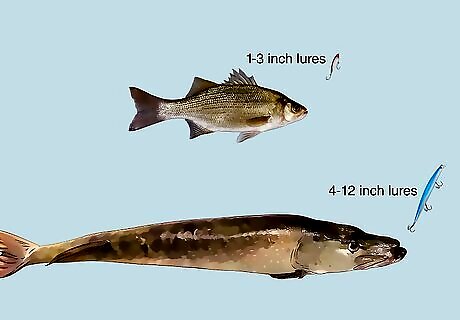
Know what sizes and types of lures are best for what fish. Different sized lures will be more effective with different fish. Typically, the bigger the fish, the bigger the lure should be. Recommend sizes for your lures according to fish type are as follows: For Crappies, Perch, Bluegills, River Trout, and White Bass, use one to three inch lures. For Smallmouth Bass, use two to five inch lures, and for Largemouth Bass, use two to six inch lures. For Walleyes, use three to six inch lures, and for Salmon and Lake Trout, use three to seven inch lures. For Muskies and Northern Pikes, use four to twelve inch lures.
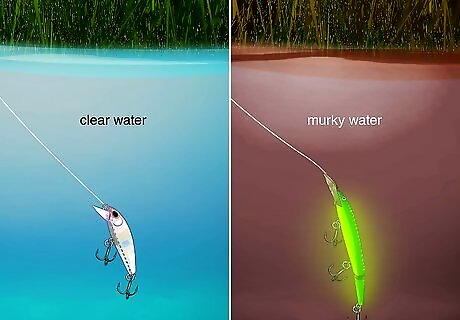
Consider other details about the lures you choose. For example, when fishing in water with thick weeds and brush, look for lures with weed guards to prevent snagging. There a variety of theories about how the color of a lure affects its effectiveness. A good rule of thumb is that light colored lures work best in clear water, and darker and fluorescent lures work best in dark, murky water. Also take into consideration the types of fish, insects, and other creatures that live where you're fishing. Matching your lures to the types of animals that fish normally eat in that area will make them more attractive.
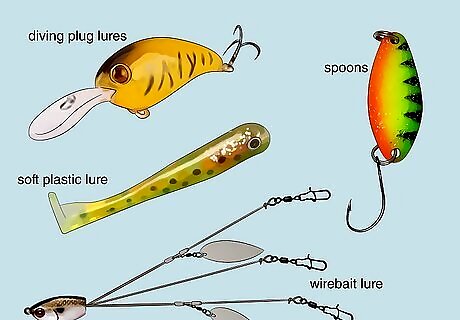
Understand the uses of several common types of lures. Different lures are better suited to attract a different types of fish under different settings. Some of the popular types of lures include: Topwater, or floating plug lures have a lot of movement across the water's surface forcing the fisherman to stay alert. These are surface lures. Diving plug lures, or crankbait lures have a weighted lip in front of the head helping the lure to dive into the water. These can be either sub-surface or deep lures. Vibrating lures contain a microprocessor and a tiny motor that mimics the random movements of live bait. Spoons mimic the movement of swimming baitfish and are very versatile. Soft plastic lures are made to resemble live bait more than any other type of lure. They can be used with or without weights. Jigs are a common classic lure consisting of a head, skirt and hook. Their heads are weighted, and they are primarily used as deep lures. Wirebait lures consist of spinners and buzzers. Spinner have one or more blades that spin around a safety-pin like body. Buzzers have a propeller on one piece of wire and a hook, skirt, and weighed body on the other side.
Attaching the Lure

Attach the lure to the fishing rod with a knot. Tie the lure directly to the line when using jigs especially. Lures are attached near the end of the fishing line. No matter the lure type you have selected, it will have an eyelet on one side that the fishing line can be fed through. Tie a knot directly connecting the lure to the fishing line. Three of the strongest knots used to tie lures include the San Diego jam, the six-turn Yucatan knot, and the Rapala knot. San Diego jam: Pull the line through the lure and double it back about ten inches. Wrap the end of the line around both lengths of the line six times, moving toward the lure. Put the end of the line through the loop closest to the lure, and pull tight. Six-turn Yucatan knot: This is used for attaching a heavier line to a lighter one. Overlap the lighter line by about 8 inches and line it up with the heavier line. Wrap the doubled-up lighter line around the heavier one six times. Thread the heavier line through the loop at the end of the lighter line and pull tight. Rapala knot: Use this knot when the lure needs freer movement. Tie an overhand knot six inches down the end of the line. Thread the line through the lure and then through the loop in the knot. Make three wraps around the line and then pass the end through the loop again. Run the end through the new loop and pull tight.

Use a snap if you think you'll want to change your lure frequently. Snaps are great for when you're using a spoon lure or a crankbait lure. Any type of lure that wobbles instead of spinning will work best with a snap, because the snap will increase the action of the lure. Make sure your snap is not too big for your lure, large snaps can dampen the action of smaller lures.
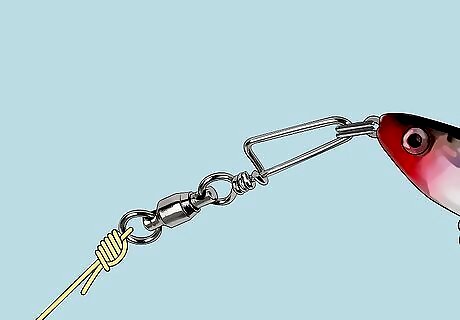
Attach the lure with a snap-swivel to reduce the twist. Twist can be due to picking up foreign material. Use a snap-swivel in water with heavy debris content, or when you're using a lure that spins. Make sure your snap-swivel is not too big for your lure, large snap-swivels can dampen the action of smaller lures.
Fishing With a Lure
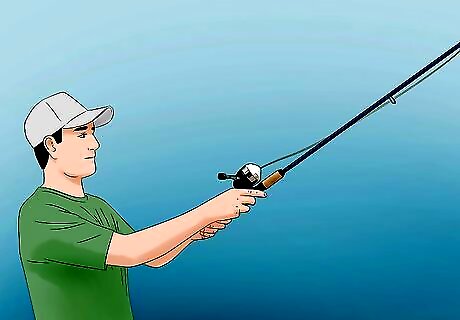
Cast the fishing rod. Once the lure is attached, the rod is now complete with the bait and hook. You are ready to fish. Cast the lure out into the water.

Use your lure according the fish activity. Weather is the biggest factor in changing fish activity. Cold weather will slow down fish activity, so it's best to present your lure slowly. Warmer water calls for faster retrieves. The type of fish you're fishing also will change how you should use your lure, for example: For muskies and northern pikes, make sure there's an ample pause before you start your retrieve. For walleyes, twitch the lure and pause it as you retrieve, or use small jig lures that you troll along the bottom.
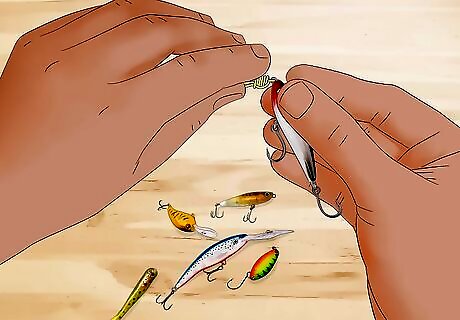
Experiment with different lures. There are many varieties of lures that can be used, in a variety of ways, for a variety of situations, based on weather, type of fish, water conditions, time of year, etcetera. The best way to find the right lure is to experiment. Have a number of lures on hand and use this information as a starting point, not as hard-fast rules.
















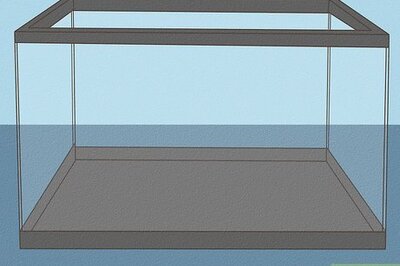

Comments
0 comment